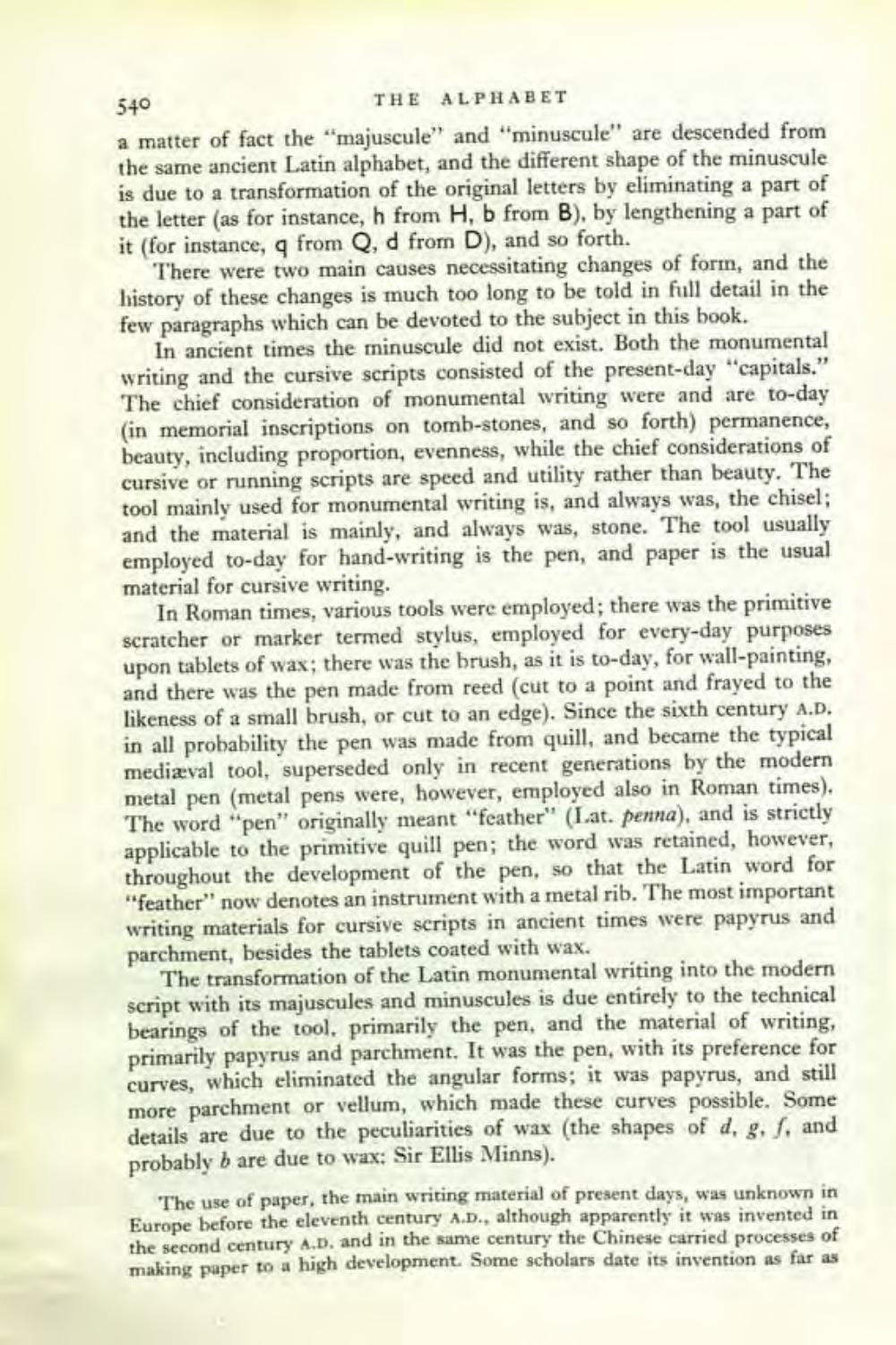________________
540
THE ALPHABET
a matter of fact the "majuscule" and "minuscule" are descended from the same ancient Latin alphabet, and the different shape of the minuscule is due to a transformation of the original letters by eliminating a part of the letter (as for instance, h from H, b from B), by lengthening a part of it (for instance, q from Q, d from D), and so forth.
There were two main causes necessitating changes of form, and the history of these changes is much too long to be told in full detail in the few paragraphs which can be devoted to the subject in this book.
In ancient times the minuscule did not exist. Both the monumental writing and the cursive scripts consisted of the present-day "capitals." The chief consideration of monumental writing were and are to-day (in memorial inscriptions on tomb-stones, and so forth) permanence, beauty, including proportion, evenness, while the chief considerations of cursive or running scripts are speed and utility rather than beauty. The tool mainly used for monumental writing is, and always was, the chisel; and the material is mainly, and always was, stone. The tool usually employed to-day for hand-writing is the pen, and paper is the usual material for cursive writing.
In Roman times, various tools were employed; there was the primitive scratcher or marker termed stylus, employed for every-day purposes upon tablets of wax; there was the brush, as it is to-day, for wall-painting, and there was the pen made from reed (cut to a point and frayed to the likeness of a small brush, or cut to an edge). Since the sixth century A.D. in all probability the pen was made from quill, and became the typical mediæval tool, superseded only in recent generations by the modern metal pen (metal pens were, however, employed also in Roman times). The word "pen" originally meant "feather" (Lat. penna), and is strictly applicable to the primitive quill pen; the word was retained, however, throughout the development of the pen, so that the Latin word for "feather" now denotes an instrument with a metal rib. The most important writing materials for cursive scripts in ancient times were papyrus and parchment, besides the tablets coated with wax.
The transformation of the Latin monumental writing into the modern script with its majuscules and minuscules is due entirely to the technical bearings of the tool, primarily the pen, and the material of writing, primarily papyrus and parchment. It was the pen, with its preference for curves, which eliminated the angular forms; it was papyrus, and still more parchment or vellum, which made these curves possible. Some details are due to the peculiarities of wax (the shapes of d, g, f, and probably b are due to wax: Sir Ellis Minns).
The use of paper, the main writing material of present days, was unknown in Europe before the eleventh century A.D., although apparently it was invented in the second century A.D. and in the same century the Chinese carried processes of making paper to a high development. Some scholars date its invention as far as




